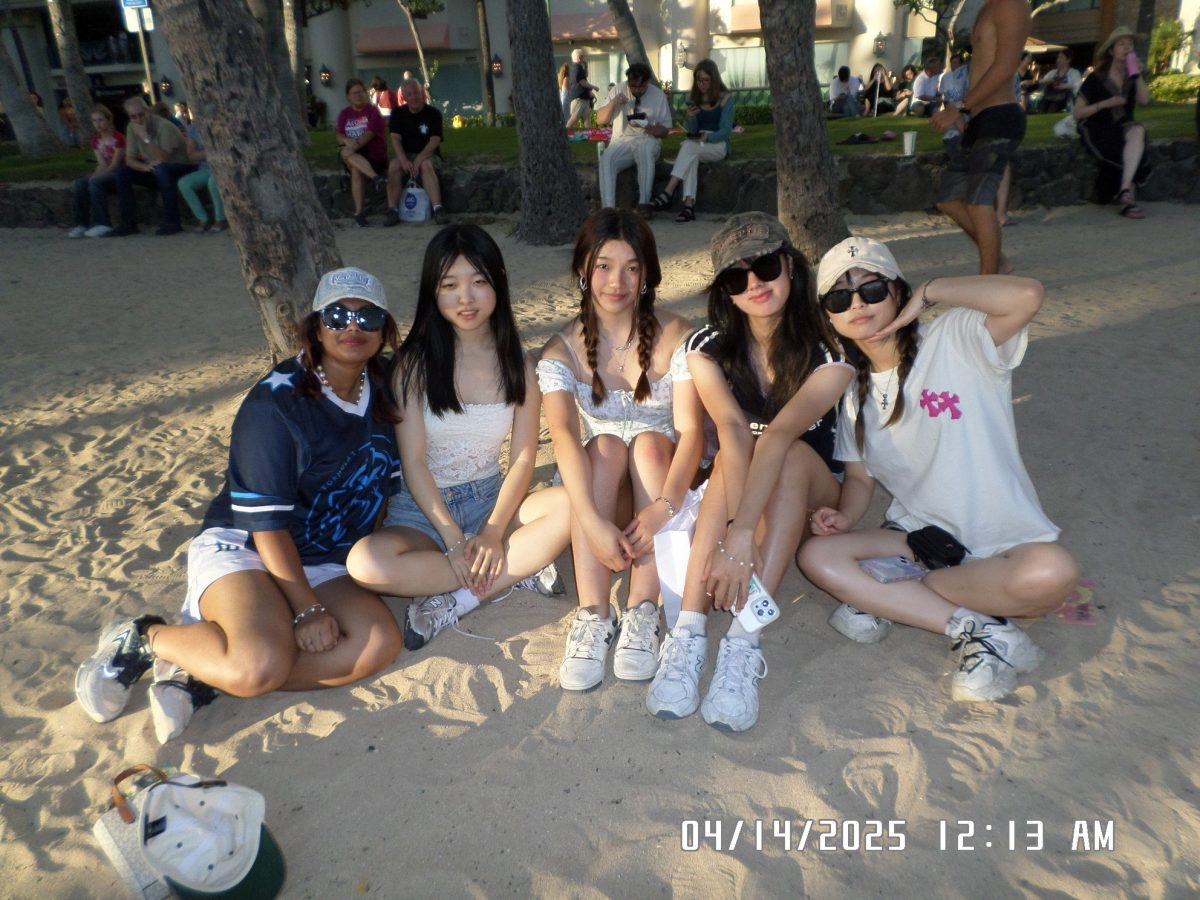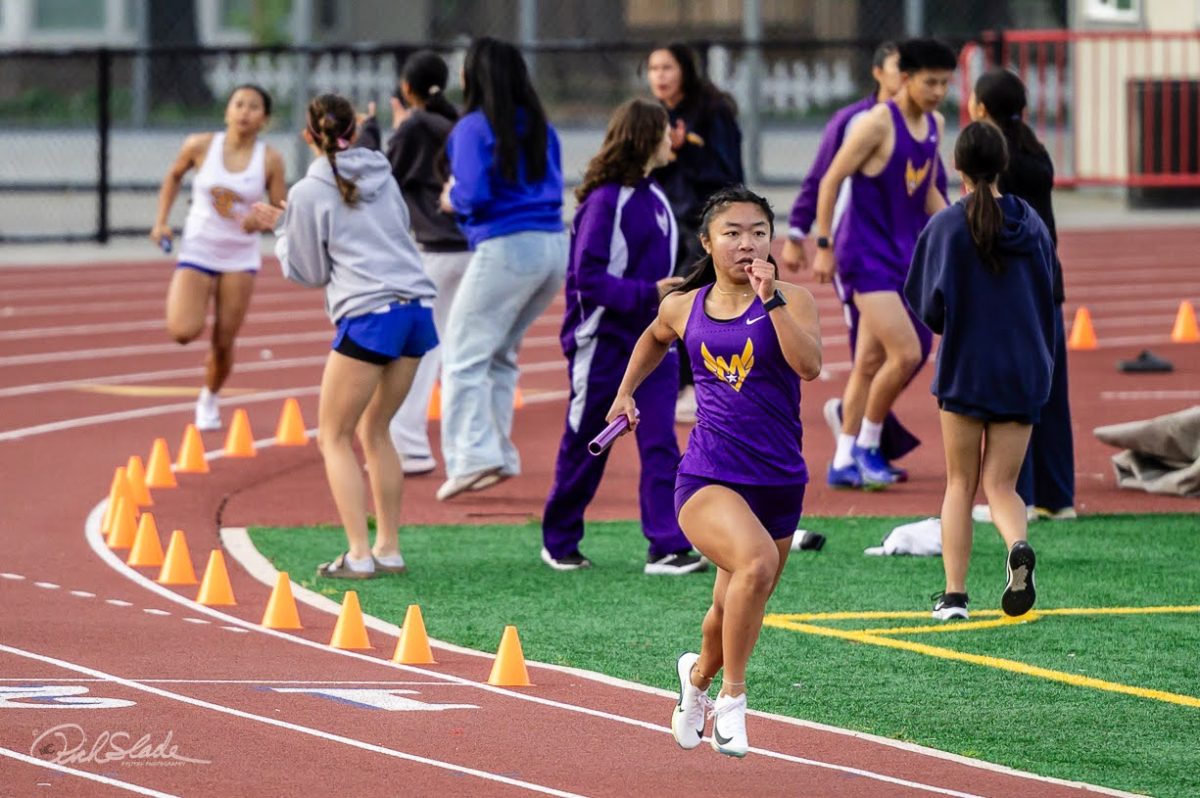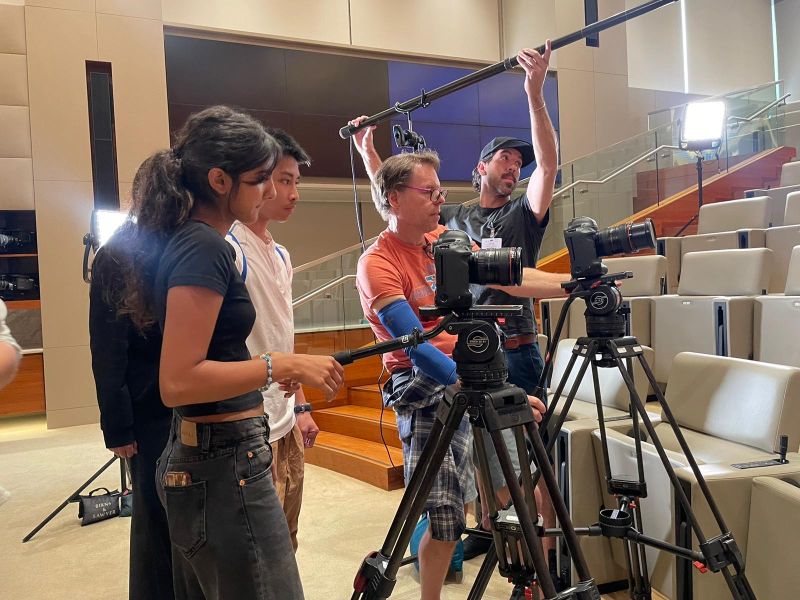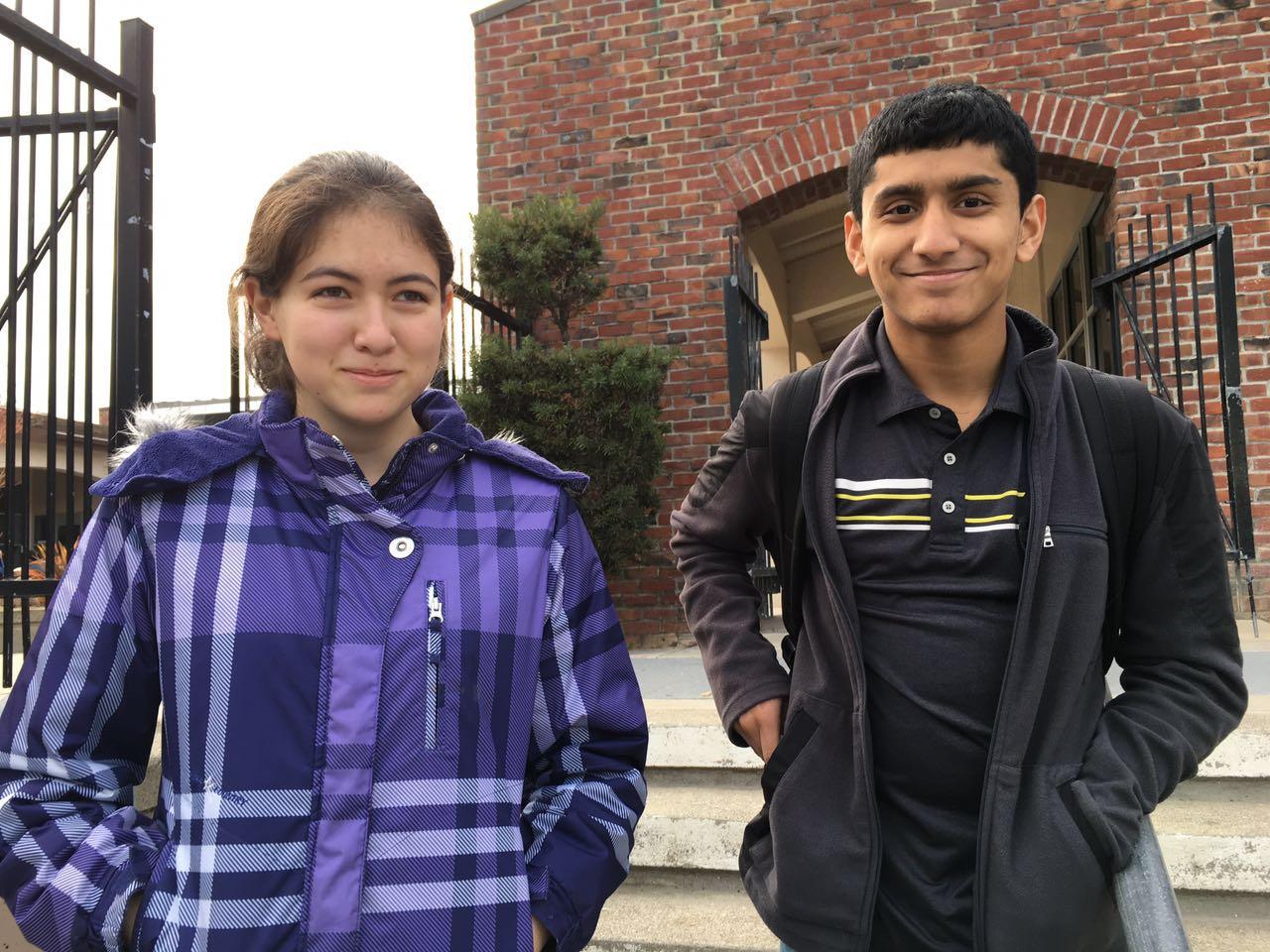
n the corner of the staff parking lot, there are two students standing on the stairs by the office building. Although they seem to be speaking to each other, a closer look reveals that only junior Shreyas Shastri is actually speaking. He is talking about a mock trial he is going to participate in. And Junior Jasmine Mathias is simply flipping through a phone on her hand and showing her questions and reactions to Shastri.
After a tongue operation over the weekend, Mathias temporarily lost her voice and now has to carry around a note to explain her silence.
Normally, Mathias would bike home after school, and Shastri would go home on foot. But, since Mathias sprained her ankle before spring semester started while stepping out of a car, she mainly relies on her mother, who picks her up at the staff parking lot, for transportation.
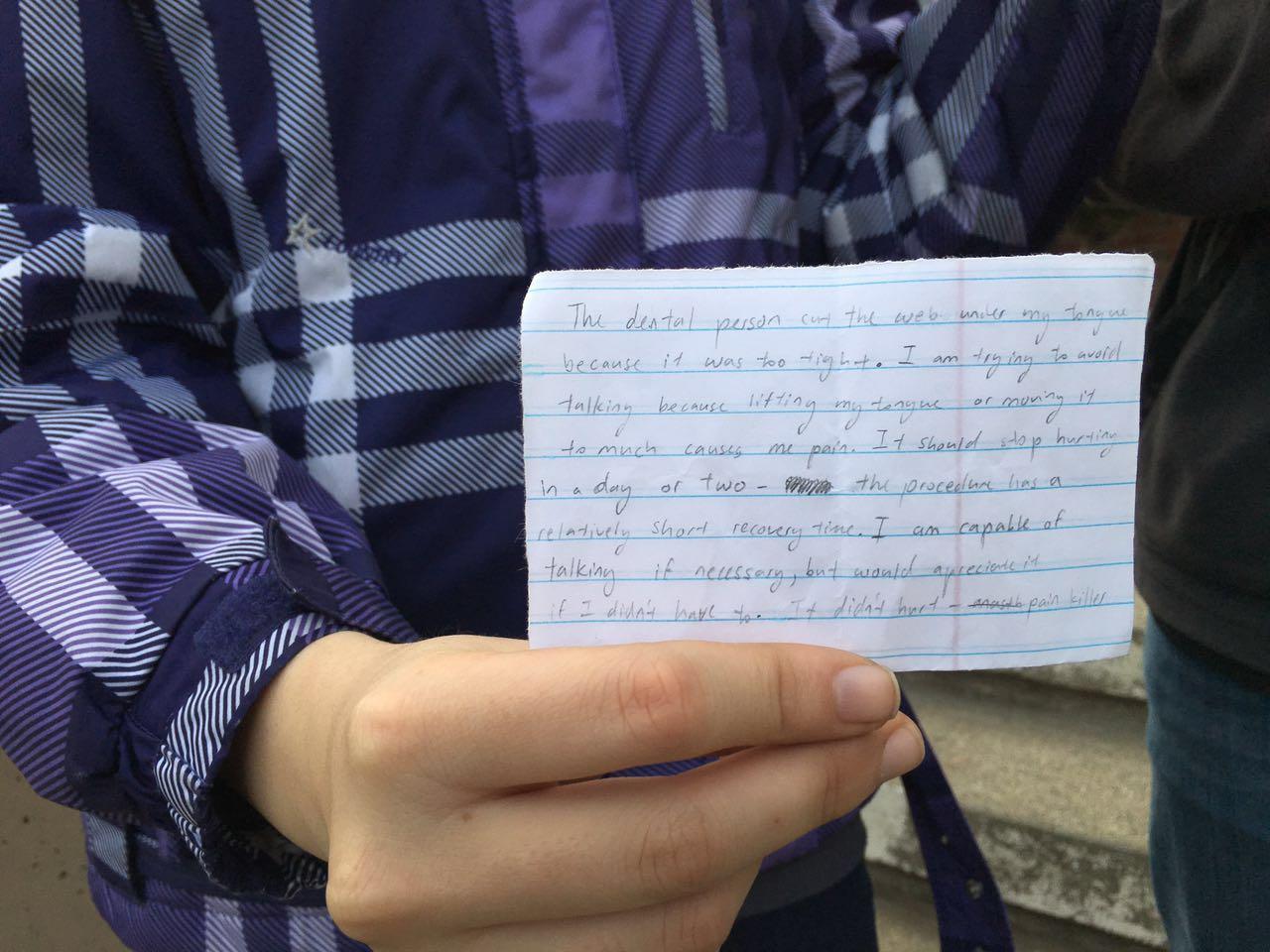
After seventh period, Mathias hops toward the staff parking lot, dragging Shastri with her, and settles herself in the middle of the stairs. She types what she wants to say in Shastri’s phone and Shastri responds in words.
They don’t seem to have a problem with communication regardless of the number of speakers in the conversation. Although only Mathias is speaking, their communication goes smoothly, especially when Mathias also uses body language that complements what she wants to say.
For example, she draws her thumb and index finger close to each other without touching to indicate “a bit.” When Mathias puts her hands in front of her and waves them inward, she means the word “before.” Sometimes Mathias will adopt more direct body expression by striking Shastri’s back in silence, when he is laughing hard after he intentionally misinterprets Mathias’ thoughts.
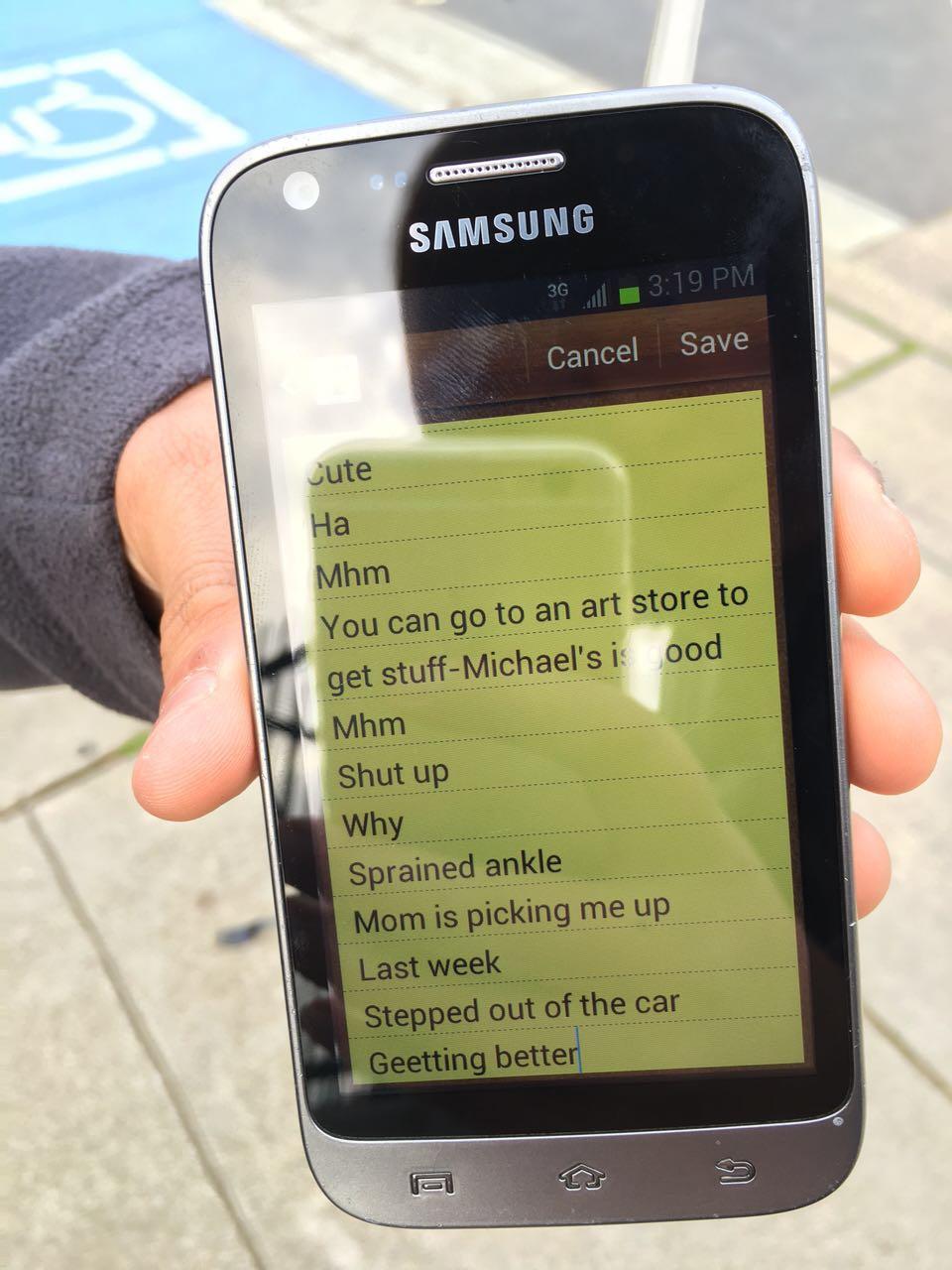
When a car pulls into the staff parking lot, Mathias raises her head and points the car out to Shastri to indicate that it is time for her to go. Just when she waves goodbye to him and starts to move down the stairs, Shastri stretches his arm toward Mathias.
“By the way, you are not going to keep my phone,” Shastri said.




